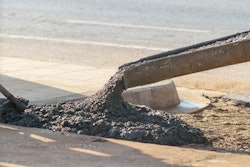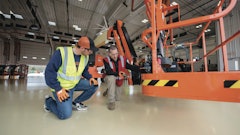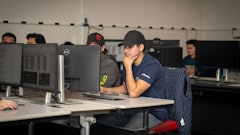
For decades, our society has overlooked an entire generation of Americans. While Silicon Valley celebrated technological disruption and universities churned out knowledge workers, we neglected the very people who quite literally built this country: the electricians, plumbers, welders and carpenters. The backbone of American infrastructure faded into the background in an economy obsessed with screens and algorithms.
We pushed the college degree as the only reliable path, convincing ourselves that making an impact required sitting behind a desk. Bright minds were funneled into cubicles, while the skilled hands that keep our lights on, our water flowing and our buildings standing were dismissed as "blue collar" as if working with your hands was inherently less valuable than working with spreadsheets.
Enter the massive adoption and democratization of artificial intelligence. Today, the widespread use of large language models has already proven that AI can perform most, if not all, entry-level tasks faster, cheaper and often more accurately than humans.
The shift is already underway. In the first phase, AI is outpacing entry-level knowledge workers in speed, accuracy and cost effectiveness. In the next phase, advanced AI agents will take on more complex knowledge work, putting intense downward pressure on wages for anyone not in the top tier of their field.
Suddenly, all the blue-collar jobs we’ve been so quick to dismiss or overlook are looking increasingly smart and essential.
The trades aren't simply surviving this massive shift – they are, in fact, the ultimate remote-proof career path.
The Economics Are Simple
In some capacity, many industries have benefited from automation and AI. Manufacturing deploys robots for tasks in controlled environments. Retail leverages AI for inventory management and logistics. Even nursing can outsource a large portion of its admin work. Construction can't do any of that.
Ninety-four percent of construction companies say their single greatest challenge is sourcing the workers they need. The ongoing labor shortage in America underlines a basic economic principle: when demand is high and supply is low, wages increase, significantly benefiting trade workers.
AI Can’t Fully Replace Skilled Trades
Three critical factors make a career in the trades uniquely “remote-proof”:
1. High-fidelity dexterous work. Programming a robot to navigate a half-built structure, assess water damage, or troubleshoot electrical issues in a 100-year-old building is beyond what current AI can manage. The environmental variability alone would break most AI systems.
2. Local necessity. You can't ship a bridge repair to China; critical infrastructure work happens where it’s needed… locally, by local workers.
3. Robotic Limitations. The dexterity, judgment, and adaptability required for skilled trades remain far beyond current robotic capabilities, and even then, they'll be expensive and high-risk in construction environments.
The Career Path Reality: Trades Are on the Rise
As skilled trades become scarcer and more valuable, companies will be forced to invest heavily in workforce development and rethink labor acquisition strategies.
We're already seeing this play out in a few ways:
- Better pay scales as demand outstrips supply
- Improved career pathways as companies fight to keep skilled workers
- Technology integration that makes tradespeople more effective, not obsolete
The Talent Gap Opportunity
We're seeing a massive talent gap emerge, and this will continue to deepen. Many young, ambitious people continue to enroll in college programs that lead to careers increasingly threatened by AI. Meanwhile, trades offer:
- Immediate earning potential without student debt
- Geographic flexibility (every city needs electricians)
- Entrepreneurship opportunities (easy path to business ownership)
- Future-proof demand (infrastructure isn't optional)
We Need to Build Locally – and We Need to Start Now
America's infrastructure demands are massive and growing.
Data center construction is exploding, with a projected CAGR of 46% between 2022-2025. Climate adaptation requires new construction methods. Renewable energy and the upgrading of aging infrastructure all require constant skilled labor.
Furthermore, the era of remote work turned many white-collar jobs into globally competitive roles overnight, allowing companies to hire developers in Prague instead of Palo Alto. But you can't remotely install plumbing in Denver from Budapest. Geographic constraints that seem like limitations are actually competitive moats–he local electrician has something the remote knowledge worker doesn't: location-based job security.
Now Is the Prime Time to Start A Career
We're watching the largest wealth transfer in modern history–from replaceable knowledge work to irreplaceable skilled labor. Trades aren't just remote-proof – they're future-proof. While others worry about their jobs moving overseas or vanishing to AI, skilled tradespeople will watch demand for their work grow, and their paychecks will follow.
The ultimate remote-proof career path isn't remote at all. It's local, tangible and more valuable than ever. The opportunity is now.



















